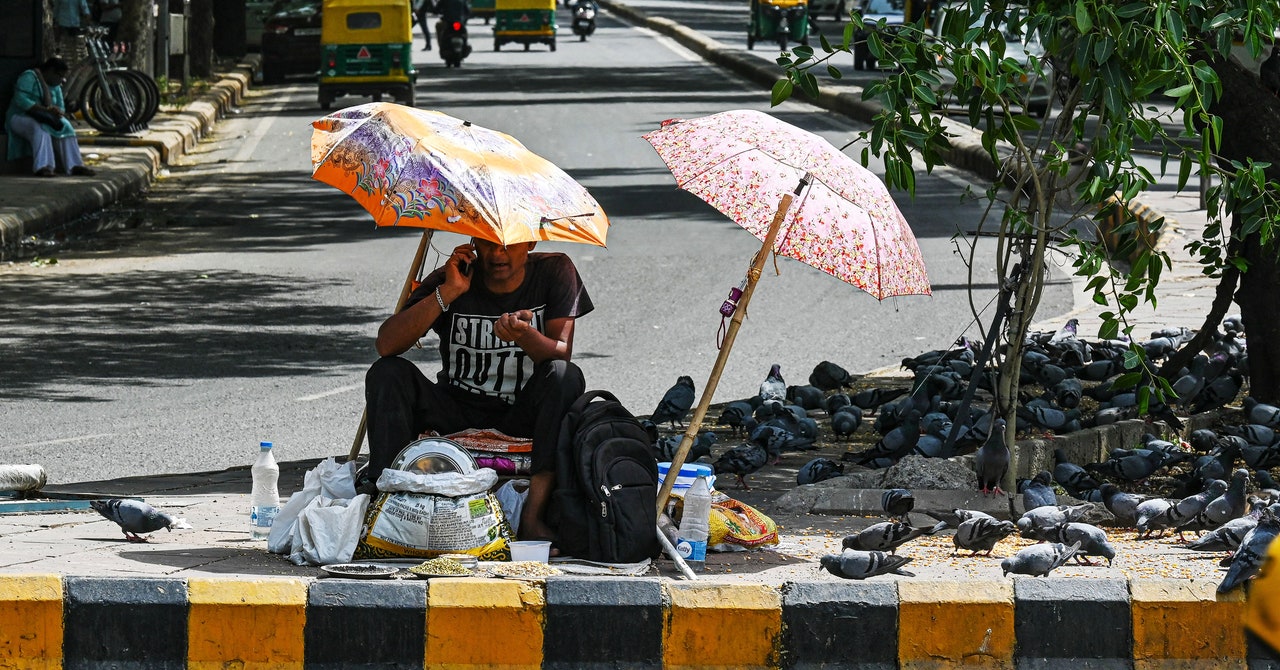
Where technical solutions can’t be used, there are still administrative controls that could help, she adds—like frequent breaks for people working under heat wave conditions. The body has another protective mechanism—exhaustion—that tells you to rest when overheating, but workers may not always have the opportunity to stop working, she says. In such cases, Venugopal recommends that two people do a job on rotation if it requires heavy exertion or being outdoors.
But the challenge lies in getting buy-in across India’s many cottage and small-scale industries. Until the government adopts stringent mandates requiring employers to protect their staff from extreme heat, individual businesses can choose whether to adopt or ignore suggestions coming from advisers like Venugopal.
It’s also not just workers who need to take care when wet-bulb temperatures are high. Rising humidity and heat lift nighttime temperatures as well, which affects everyone. “When the humidity rises, the temperature doesn’t drop quite so fast at night,” says Steven Sherwood, a professor at the University of New South Wales Climate Change Research Center in Australia. When the sun goes down, infrared radiation disperses some of the heat that has built up on Earth during the day. “When humidity is higher, there is greater cloud cover, which acts like a blanket preventing that escape of heat,” he says.
At night the body should recover from the daytime assault of heat, but because nights are getting hotter, that recovery is hampered, says Dutta. Whenever people talk about the effects of heat, they usually refer to its direct effects—such as heat exhaustion and stroke, which can be fatal or debilitating—but these are only the tip of the iceberg, he says. “If heat stays high in the night, it affects the body’s homeostasis, its ability to regulate and maintain its internal body temperature.” Upset this and your cellular and metabolic activities become disrupted, which can be a driver of disease, and can even be fatal itself. This is a big concern, given that only an estimated 8 percent of Indian households have access to air conditioning.
Analysis by World Weather Attribution suggests that climate change has made deadly weather events in South Asia 30 times more likely than they used to be. In the pre-industrial age, extreme heat waves would crop up once every 3,000 years. Now the probability is once every 100 years. Across India, on average nine heat waves were recorded every year from 1980 to 1999. The average between 2000 and 2019 is almost triple that, at 23.
South Asia is also not the only area at risk. Potentially fatal mixtures of heat and humidity have been increasing around the globe. Coastal cities on the Persian Gulf seem particularly susceptible to very high wet-bulb temperatures in the future, says Luke Harrington, senior research fellow in climate science at the New Zealand Climate Change Research Institute. According to data from NASA, other countries will experience more critical wet-bulb temperatures in the future too, including the United States. States such as Arkansas, Missouri, and even Iowa are at risk. And while some places may have more resources to handle the issue, people outside of India might not be so adapted to cope.
We can’t be certain that dangerous temperature thresholds are going to be breached more frequently around the world—but it is likely, says Sherwood. “At 3 to 4 degrees Celsius of global average warming, a lot of places will experience more fatal wet-bulb temperatures, which will lead to more deaths,” he says, referring to the amount of warming the world is likely to see this century if climate action isn’t taken. If this is the future that’s ahead of us, then how heat increases in India—and is handled—could be a lesson for what the rest of the world should expect.
For Lakshmanan, the heat remains an immediate problem. He can’t afford to let it affect his concentration, he says. If he’s off the mark by even half an inch while crafting his metal frames, all of the material he uses is wasted, and he’s responsible. “There are machines to do my job now, so I need to be alert regardless of the conditions I work in,” he says. “But this summer especially, it’s been really hard. It has tested the limits of our endurance.”


